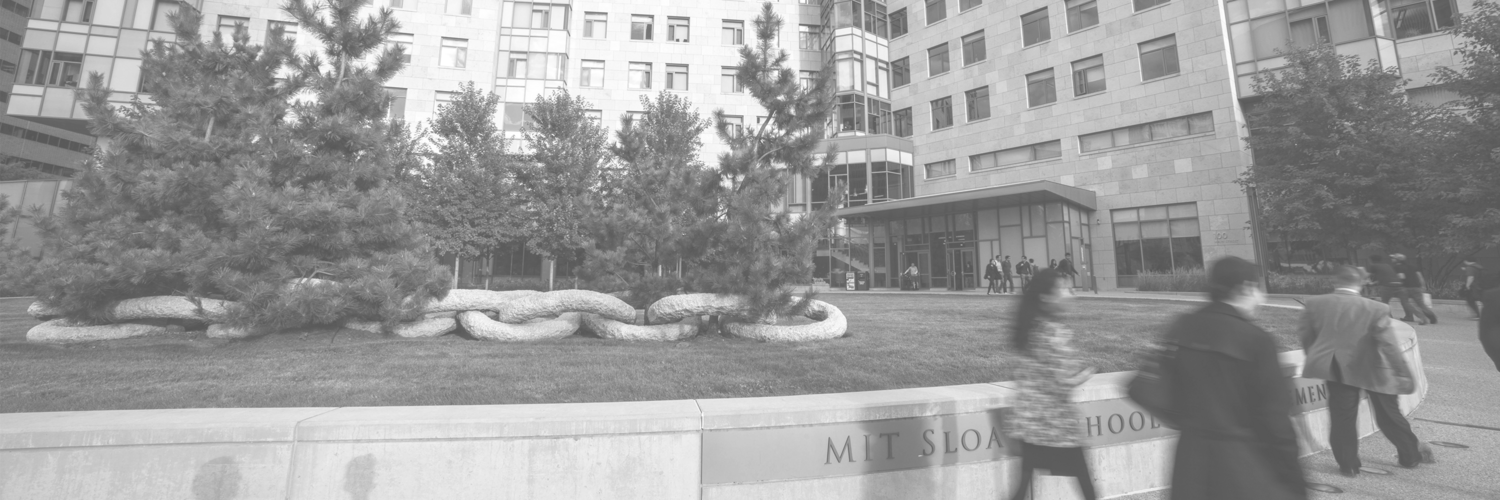Analytics
Optimizing My Approach to the Fall Semester as an MBAn Student
My first day of orientation at MIT Sloan
As a brief introduction, my name is Alison Borenstein, and I am an MIT Sloan MBAn Candidate for 2020. I hope that my perspective on the Master of Business Analytics Program will be helpful for those interested in joining the class of 2021 and beyond.
Some background on me: Prior to starting here at MIT Sloan, I obtained my bachelor’s degree in Civil Engineering from Johns Hopkins University and my master’s degree in Structural Engineering from Stanford. After working as a structural engineer for a few years, I found myself leaning away from the industry specific aspects of the profession and moving towards the modeling aspects. Eventually, I made the move over to the world of Business Analytics and spent three years working in the field. Although learning on the job is a great way to acquire practical knowledge, it became pretty clear to me that, in order to truly embrace a career in Business Analytics, I needed to go back to school. I was immediately attracted to MIT and the MBAn program because of its breadth, brevity, and prestige. After attending admitted students’ day (AdMIT day), there was no doubt that this was the right place and program for me. On AdMIT day, I was able to see first hand how passionate about this program the faculty and administration truly are, and that made me feel confident in my decision. Still, I was a bit apprehensive about coming back to school after a number of years.
Fast-forwarding nearly 6 months, I couldn’t be happier with my choice. I have learned so much in such a short amount of time and have met and worked with some of the most brilliant minds in the field of Business Analytics. However, between slack notifications, lectures, recitations, problem sets, projects, office hours, and research meetings, it has been difficult to take time to reflect on my experience at MIT Sloan thus far. This has been the first time, in fact, that I’ve had the opportunity to reflect on my journey, and a few things stand out:
Support Is Invaluable
The willingness of our professors, our learning teams (TAs), and our program administration to provide us with support is unmatched. The program directors have been quick to adjust to the needs of our larger class size (we are the first class of 60) by offering private tutoring lessons for less familiar topics and finding new classrooms to accommodate the number of people showing up to office hours. Furthermore, both TAs and professors are quick to respond to questions we post on online learning portals and are also happy to offer additional one-on-one help. It is clear that everyone is committed to helping us learn and to ensuring that we feel comfortable asking for help.
Our Collective Experience Makes Us Stronger
One of the things I’ve enjoyed most about jumping into a program with only 60 other students has been the ability to meet and work with almost every single person in the class. In the months I’ve spent with my fellow classmates, I’ve come to understand how MIT Sloan’s mission to create a diverse environment contributes to our learning experience. My classmates have a diverse set of educational and professional backgrounds. There are those with more traditional ones, of course – Operations Research, Computer Science, Applied Math; and others, like myself, with less traditional ones – Economics, Chemical Engineering, Mechanical Engineering, Material Science, and International Relations. This has led not only to extremely interesting classroom discussions, but also to a much more collaborative atmosphere in working with one another.
This class has truly adopted the “We are all in this together” mantra, and that has made it possible for any student to work and learn alongside any other. In a program where one day you are learning cutting edge technical skills, and then the following day must immediately focus and apply these new skills in the real world, with real companies, the diverse nature of our class makes each and every one of our unique skillsets critical to our success in the classroom.
Remember the Key Takeaways
While it’s important to apply what we’ve learned to problem sets, midterms, and projects, it’s just as important to focus on the bigger picture – namely, what should stick with us when we move on from this institution.
In the course of this semester I’ve realized just how much there is to learn from our professors’ insight, experiences, and willingness to be open and to share their knowledge. Most importantly, I’ve taken some of their key messages to heart. Here are just a few excerpts from the past few months that I know will stick with me:
-
In Machine Learning Through an Optimization Lens, Professor Bertsimas provided a concrete example of how a 2% increase in accuracy can have a significant impact on saved lives through the context of determining which type of model to use for deciding whether or not to administer a CT scan to children to detect clinically-important traumatic brain injuries. Typically, a 2% increase would not mean much to me; however, in the context of saving lives, a seemingly negligible increase in accuracy can be hugely impactful.
- In Analytics Edge, Professor Jacquillat demonstrated the need to consider ethics through a case study assignment that taught us about the balance between honesty, modeling uncertainty, justification, and managerial implications associated with model selection. Throughout our careers in analytics, ethical dilemmas will certainly arise, and this case study made me feel more prepared for these situations.
- In Optimization, Professor Parrilo signified the importance of sensitivity analysis when being asked “What if” questions in our future positions within a company. This helped me to understand how to quickly and efficiently evaluate different scenarios, especially in situations where we have incomplete knowledge of the problem data.
- In Analytics to Action, Professor Fernandez and Professor Reagans highlighted the need to think about the data we receive as well as the data we don’t receive in order to approach problems holistically, and to understand why the data we don’t have when solving a problem is just as important as the data that we do have.
As I mentioned before, it’s easy to get bogged down in the details or to feel overwhelmed by the sheer amount of information we are imbibing, but I’m trying to remind myself to soak it up instead. At MIT Sloan, you are surrounded by brilliant professors and classmates that represent not only different corners of the world, but also different corners of the Business Analytics profession. We each bring a different perspective and will take different career paths once our time at MIT Sloan comes to an end. I learn from my classmates every day, and in many ways, that has been one of the most valuable aspects of my MBAn experience. With all of these things in mind, I’d like to spend the remainder of this semester the same way I started – with an open mind and eager to learn every single day – because my time spent as an MBAn student at MIT Sloan is finite, and my intention is to make it optimal.
Alison Borenstein, MBAn 2020


